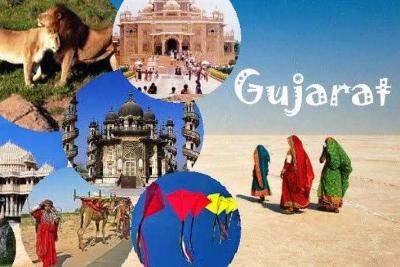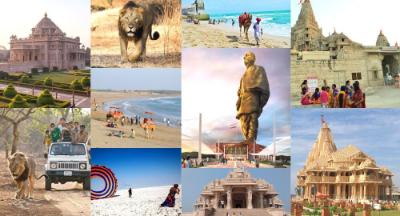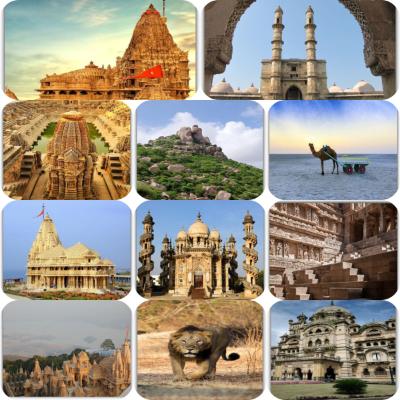The Evolution of Gujarat’s Markets: A Look at Commerce through the Ages
Gujarat, one of the most vibrant states in India, has a rich history of commerce and trade. It has been a hub of economic activities since ancient times, with its well-connected ports attracting traders from different parts of the world. The markets of Gujarat have played a crucial role in shaping its economy and culture. In this blog post, we will take a journey through the evolution of Gujarat’s markets, exploring the changes and influences that have shaped commerce in the region.
Ancient Times: The Birth of Trading Centers
The history of Gujarat’s markets dates back thousands of years. In ancient times, the ports of Lothal and Dholavira played a significant role in facilitating trade between the Indus Valley Civilization and Mesopotamia. These trading centers acted as a bridge between East and West, exchanging goods like textiles, spices, and precious metals.
During the Mauryan Empire, Gujarat’s markets flourished further under the influence of Emperor Ashoka. He built several roads and encouraged trade, creating a network that connected different regions of India. This led to the growth of markets like Bharuch and Surat, which became major trade hubs.
The Influence of Islamic Traders
The arrival of Islamic traders in the 7th century brought new opportunities and influences to Gujarat’s markets. The ports of Cambay (now known as Khambhat) and Surat became bustling centers for international trade. Arab, Persian, and African merchants built warehouses and established trading networks, bringing in goods like textiles, perfumes, and spices. The influence of these traders can still be seen in the culture and architecture of Gujarat’s markets today.
The Era of European Traders
The arrival of European traders in the 15th century marked a significant shift in Gujarat’s markets. The Portuguese, Dutch, and later the British, established trading posts along the coast, making Gujarat a crucial part of the global trade network. Surat, in particular, became a thriving mercantile center, attracting merchants from Europe, Africa, and the Middle East.
The presence of European traders led to the introduction of new goods and technologies, such as textiles, pottery, and firearms. Gujarat’s markets became synonymous with high-quality textiles, with Surat’s silk and Ahmedabad’s cotton trade gaining prominence.
The Rise of Modern Markets
Gujarat’s markets continued to evolve during the colonial period, with the establishment of modern infrastructure and industrialization. Ahmedabad emerged as a major industrial and commercial center, with textile mills and factories driving its economy. The famous textile markets of Ahmedabad, such as Manek Chowk and Ratanpole, became the go-to destinations for traders and textile enthusiasts.
Post-independence, Gujarat witnessed rapid urbanization and the rise of modern retail markets. The advent of shopping malls and supermarkets transformed the shopping experience for consumers. However, despite the growth of modern markets, traditional bazaars and street markets still retain their charm and continue to be an important part of Gujarat’s commerce.
The Present Scenario
Today, Gujarat’s markets are a vibrant mix of traditional and modern commerce. Cities like Ahmedabad, Surat, and Vadodara have a thriving retail and wholesale sector, attracting traders from all over India. Apart from textiles, sectors like diamond cutting and polishing, pharmaceuticals, and chemicals contribute significantly to Gujarat’s economy.
The state government has also focused on the development of Special Economic Zones (SEZs) to promote trade and investment. The SEZs in cities like Mundra and Kandla have become major industrial and logistics hubs, attracting both domestic and international businesses.
In Conclusion
Gujarat’s markets have come a long way from being ancient trading centers to modern commercial hubs. The state’s rich trading history and entrepreneurial spirit have shaped its economy and made it a force to be reckoned with. Whether it is the bustling textile markets of Ahmedabad or the vibrant diamond industry of Surat, Gujarat’s markets continue to play a significant role in India’s economic growth. So, the next time you visit Gujarat, make sure to explore its markets and experience the vibrant commerce that has thrived through the ages.
Thank you for reading our blog post! If you found it informative and interesting, we encourage you to share it with others. Let's spread the word about the evolution of Gujarat's markets and the rich history of commerce in the region.
Disclaimer : The information provided in this blog is for general informational purposes only. While we strive to keep the content accurate and updated, TravelSetu assumes no liability for errors or omissions. If you believe any part of this blog infringes your rights or causes concern, please notify us immediately at info[at]travelsetu[dot]com so that appropriate action can be taken.





